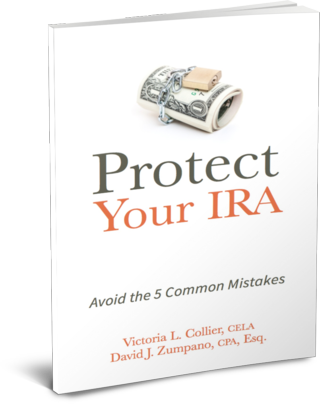When doing estate planning, it is critical that the attorney is aware of the basic tax basis issues and their impact on estate planning.
Tax “basis” is a term related to income taxes. The “tax basis” of an asset owned by an individual can change based upon the type of asset, when it was purchased, and the value at sale or death of the owner. So let's start with the basics. Most principal assets are purchased. This includes stocks, bonds, mutual funds, real estate, and even businesses, among other things. When you purchase a principal asset, the IRS looks at the value of that asset when purchased to determine what, if any, income tax should be paid when and if it is later sold. For example, if you buy a stock at $10 per share and hold it for a period of years and then sell it when it is worth $15 a share, the IRS will identify your tax basis as $10 and your sale value at $15 to net an income taxable amount of $5 per share (aka “capital gains”). Over the years, the government has taxed capital gains differently from ordinary income.
 There are additional issues to consider with basis. For example, it can change if you own real estate, and if it is used as a business (rented out to others), you can “depreciate” the real property. Depreciation is a non-cash-flow expense against your income. For example if you buy a commercial building for $250,000 and rent it out, in addition to the regular expenses incurred each year from your cash flow, including interest, taxes, insurance, utilities, and general maintenance, the IRS also allows you to take a depreciation expense that represents a percentage of the value of the real estate. Traditionally, depreciation periods are over 27½ or 39½ years. So a $250,000 building divided by 39½ years provides for the annual depreciation amount of $6,329. While the IRS allows you this deduction, you do not have to pay anybody anything to get the deduction. In contrast, however, the $6,239 depreciation deduction reduces your basis in the real estate. So, for income tax purposes, your building no longer has a basis of $250,000, but now $243,761. As you continue to own the building and take the depreciation expense, your tax basis in the real estate continues to decrease, thereby leading to a greater potential income tax when the property is later sold. If the property had been depreciated for 10 years, the basis would have been reduced by $63,390, netting a new tax basis of $186,710. If later sold for $350,000, a capital gain will be assessed on the difference between the sales price and no adjusted basis ($163,290), not the original purchased price and sales price ($100,000).
There are additional issues to consider with basis. For example, it can change if you own real estate, and if it is used as a business (rented out to others), you can “depreciate” the real property. Depreciation is a non-cash-flow expense against your income. For example if you buy a commercial building for $250,000 and rent it out, in addition to the regular expenses incurred each year from your cash flow, including interest, taxes, insurance, utilities, and general maintenance, the IRS also allows you to take a depreciation expense that represents a percentage of the value of the real estate. Traditionally, depreciation periods are over 27½ or 39½ years. So a $250,000 building divided by 39½ years provides for the annual depreciation amount of $6,329. While the IRS allows you this deduction, you do not have to pay anybody anything to get the deduction. In contrast, however, the $6,239 depreciation deduction reduces your basis in the real estate. So, for income tax purposes, your building no longer has a basis of $250,000, but now $243,761. As you continue to own the building and take the depreciation expense, your tax basis in the real estate continues to decrease, thereby leading to a greater potential income tax when the property is later sold. If the property had been depreciated for 10 years, the basis would have been reduced by $63,390, netting a new tax basis of $186,710. If later sold for $350,000, a capital gain will be assessed on the difference between the sales price and no adjusted basis ($163,290), not the original purchased price and sales price ($100,000).
Finally, it is important to note as an estate planner that tax basis gets automatically “stepped up” if you own the asset at death. Under the previous scenario, if you bought a stock for $10 that grew to $15 or you owned a piece of property that you paid $250,000 for and depreciated $63,000, when you die, both are revalued at your date of death and the values are included in your taxable estate for estate tax purposes. The good news is their estate tax does not trigger any actual payment requirement unless the estate exceeds $5,430,000. Conversely, while it does not incur an estate tax, the beneficiaries get a “step up” in basis after the death of the original owner to the value at date of death, so any subsequent sale after death will yield no income taxes. When planning, sometimes holding assets until after death has a strategic advantage if they are significantly appreciated.
This is also true in charitable planning. If assets that have been appreciated are donated to charity prior to death, the donor will receive an income tax charitable deduction equal to the fair market value, not the tax basis, but there are limitations on the charitable deduction if the contribution was made from appreciated assets. A charitable contribution made with a full basis asset (i.e. cash) can be deducted up to 50 percent of the donor’s adjusted gross income, whereas the deduction for a charitable donation of appreciated property is limited to 30 percent of adjusted gross income. The biggest advantage, however, comes from individuals waiting until after death to convey their highly appreciated assets, so no capital gains tax is incurred to the client (because they didn’t sell it during life) nor the beneficiary (because they received a “step up” in basis). Understanding tax basics is critical to ensure that you always consider the income tax impacts when signing in the short and long term for a client.
If you are interested in learning more about Lawyers With Purpose and in particular how our Client Centered Estate Planning Drafting Software can make a difference in your estate and/or elder law practice, just click here and schedule a day/time that works for you to discover it for yourself – first hand. Just show up with any questions you have! We've got the answers!
David J. Zumpano, Esq, CPA, Co-founder Lawyers With Purpose, Founder and Senior Partner of Estate Planning Law Center








